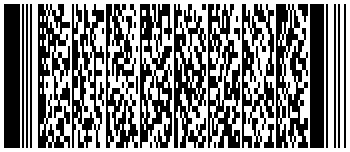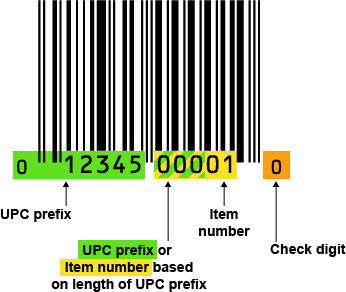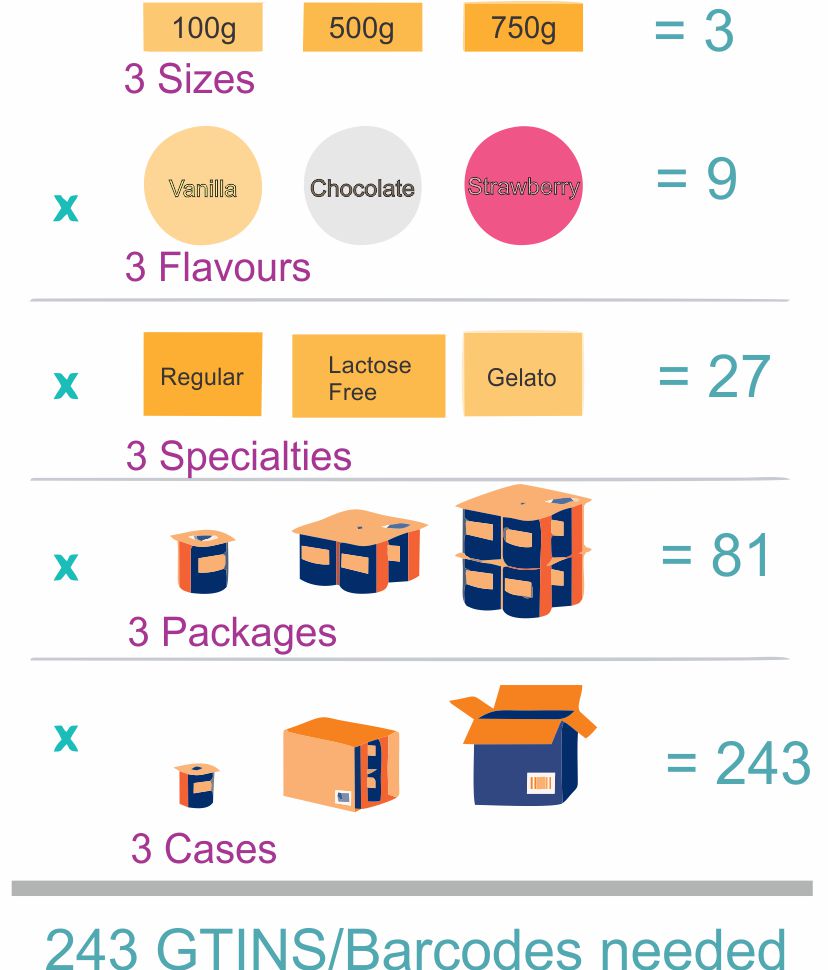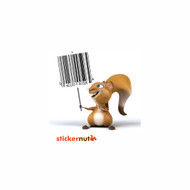I want to sell on Amazon! I need Bar codes, UPC's and GTIN's.
Posted by Karen Gendron on 14th Mar 2019
If you want to sell your product globally, you need to know what GTIN's and Bar Codes are.
What are Bar Codes and QR Codes?
Most people are quite familiar with bar codes as they are seen on the daily at most retail and grocery stores.
Barcodes began by automating supermarket checkout systems. Their use has spread to many other tasks that are generically referred to as automatic identification and data capture (AIDC).
1. Barcodes eliminate the possibility of human error. The occurrence of errors for manually entered data is significantly higher than that of barcodes. A barcode scan is fast and reliable, and takes infinitely less time than entering data by hand.
2. Using a barcode system reduces employee training time. It takes only minutes to master the hand-held scanner for reading barcodes. Furthermore, employees do not have to gain familiarity with an entire inventory or pricing procedure.
3. Barcodes are inexpensive to design and print, and are versatile. Generally they cost mere pennies, regardless of their purpose, or where they will be affixed. They can be customized economically, in a variety of finishes and materials. They are used for any kind of data collection such as pricing, inventory, tracking, and shipping.
4. Inventory control improves, and better data is provided - quickly. Barcodes make it possible to track inventory so precisely, inventory levels can be reduced. Data for any inventory can be customized to contain all relevant data as needed. This makes for instantaneous reliable data.
5. Barcodes promote better decision making. Because data is obtained rapidly and accurately, it is possible to make more informed decisions. Better decision making ultimately saves both time and money.
What information is in the Barcode?
The combination of black and white bars (elements) on bar codes represents different text characters which follows a set algorithm for that barcode type. If you change the sequence of elements you get different text. A barcode scanner reads this pattern of black and white that is then turned into a line of text your computer can understand. A barcode can hold any type of text information you encode but with product labels the price is not usually encoded. The bar code normally works with your Point of Sale system.
What is a 1D (linear) barcode?
A 1D (linear) code is the style barcode that people are most familiar with. There are several versions of 1D codes and some encode only numbers while others can encode any keyboard character. All the information in the code is organized horizontally from left to right. These types of codes can be read by any type of barcode scanner.
What is a 2D barcode?
2D barcodes are a bit more complex as they organize information vertically and horizontally. This allows 2D codes to hold much more information and take up less space than a 1D code. 2D codes require an imager scanner to be read properly.
 UPC
UPC
 QR Code
QR Code
 PDF 417
PDF 417  Datamatrix
Datamatrix
How many characters can fit into a barcode?
Depending on the specific barcode type, 1D barcodes can have from 20-25 characters while 2D codes go up to 2,000 characters. The main practical concern is that as you increase the amount of information in the barcode the bigger it will become. This is especially the case with 1D barcodes. Most people encode 8-15 characters.
How small can I make a barcode?
Barcodes can come in a wide range of sizes and can get down to a 1/8th inch square when using a 2D code. However, there is a trade off since making such a small code will limit the amount of characters you use and will require a high resolution printer to ensure the quality of the print is still readable by a scanner. The smaller a code becomes the more difficult it is to read.
The Global Language of Business (Helpful link: https://www.gs1ca.org/files/GS1-General-Specifications-2018.pdf)
UPC Number and UPC Barcode
Do I need a UPC number?
If you sell products to a distributor or a retailer, you will typically need a UPC barcode. If you are not sure, it is best to contact the company selling your product to find out their policy on UPC barcodes. When you obtain your UPC number, you will also get a certificate authenticating your number. Most retailers require proof of the certificate to verify that your number is unique and authorized.
How do I get a UPC number in Canada?
Only GS1ca can issue you a globally unique "GS1 Company Prefix" that is used to create UPC numbers.
Follow this link for all the information you need to start this process: Apply for a UPC Barcode
How much does a UPC number cost?
The fee is determined by the number of unique products you need to identify and as well as gross sales revenue.
Because the prices vary so greatly, only GS1 can give you an accurate cost for this.
What is a UPC barcode?
You are probably familiar with the barcodes you see on most packaged products. These barcodes are in the UPC-A code format. It is 12 digits long and looks something like this:

The UPC number itself is referred to as the GTIN (Global Trade Item Number). The GTIN is made up of two parts: The UPC Company Prefix and the number that you have assigned to that unique product.
This first component, the UPC Company Prefix, is between 6 and 10 digits long, and is assigned to you by GS1. The number of digits is determined by how many products you will need to assign numbers to. So if you have thousands of products, your company prefix will need to be fewer digits. If you have just a few products, your company prefix will likely be closer to 10 digits long. This company prefix number will represent you as the manufacturer on all of your products, as well as in any EDI (Electronic Data Interchange) applications.
The second component is your unique number used to reference a specific product. It is called an "Item Reference Number." This number is not assigned by GS1- it is up to the manufacturer to assign the unique Item Reference Number for a given product.
The last number is a check digit calculated from the previous 11 digits. It is not randomly assigned. The barcode label printing software you use to create your labels will calculate this check digit for you.
What is a GTIN: Global Trade Item Number?
It is an umbrella term used to identify items including both products and services. The GTIN is the number commonly encoded in or found at the bottom of GS1 barcodes. The GTIN harmonizes the world to 14-digit data structures for all applications.
The GTIN format is required in order to be compliant with global identification standards.
Can I print my own UPC barcodes?
Yes. Stickernut can also print UPC or Barcode labels.
What is a GS1 Company Prefix Barcode?
For most GS1 Canada subscribers, the first thing they want to do is get a barcode (Company Prefix License).
GS1 barcodes are the only globally-recognized barcodes, enabling organizations to trade all over the world while maintaining full supply chain traceability.
More than six billion GS1 barcodes are scanned around the world every day.
How many GTINs do you need?

Generally, you will need one GTIN for each of your products and another, different type of barcode for each packaging format, such as pallet or case.
You may find you need more GTINs than you thought.
You should also consider how many barcodes you will need as your business grows to ensure you have enough GTINs to cover any new products you launch or updates to your existing products.
I want to sell on Amazon!
If you are planning on selling your products on Amazon.ca, you will need to have a GS1 GTIN. That way your products can be tracked or traced anywhere in the world.
You may know GTINs by another name such as barcode number, universal product code (UPC) or EAN. They are names for the number that is needed to generate a barcode. Unlike SKUs, which are unique to each company, GTINs are a global standard.
By ensuring products have a GS1 GTIN, Amazon Canada can guarantee the authenticity of all products available. This reduces the possibility of counterfeit products and the chance of customers being shipped the wrong items.
For more information, the Office of Consumer Affairs has a Consumer Trends Report with details about the use of bar code technology in the retail sector. To find more information on inventory control, check out Supply chain management.

